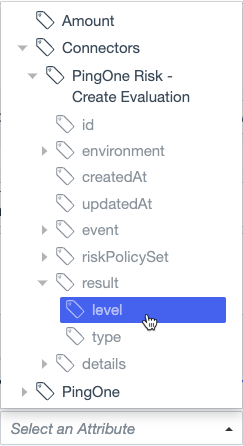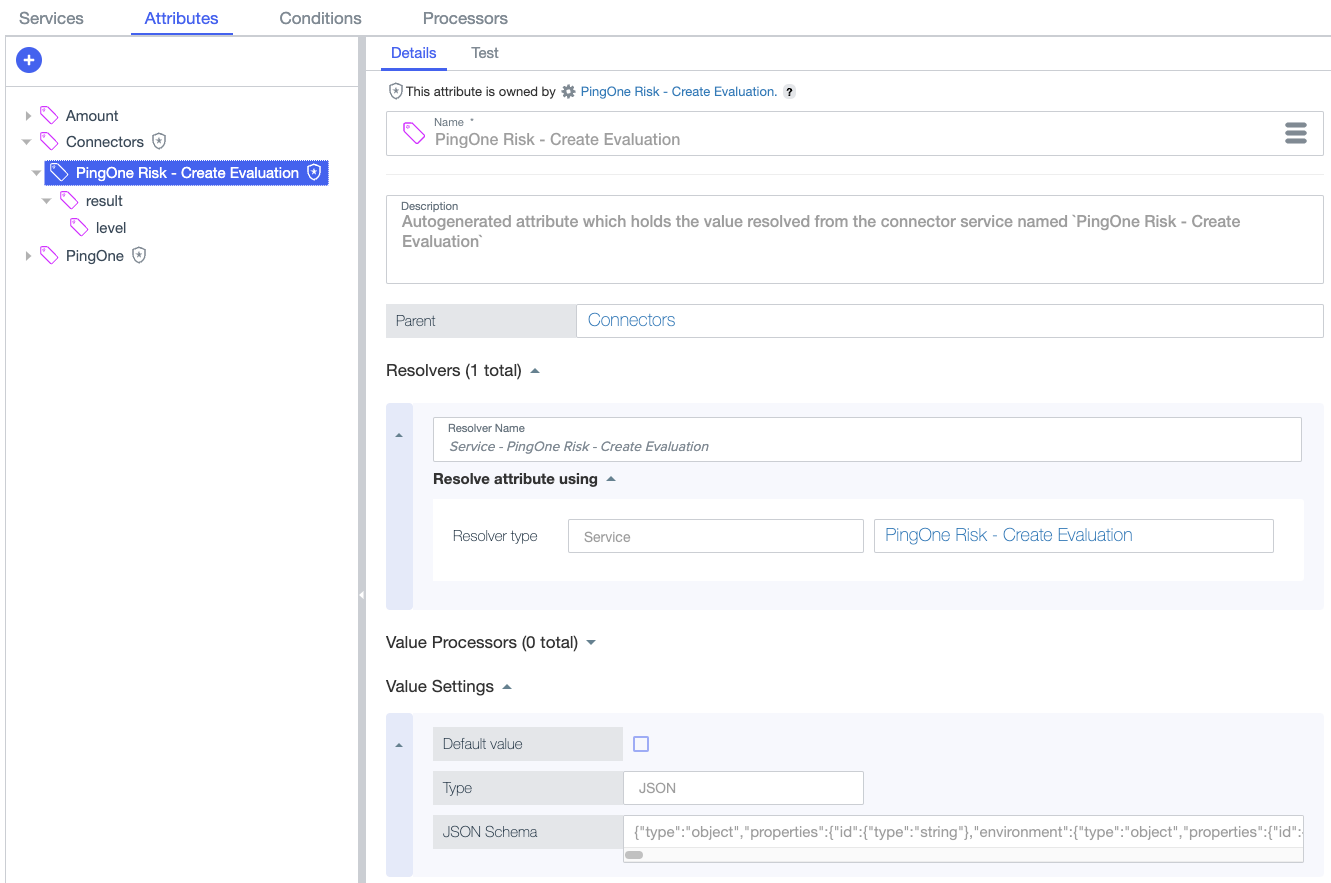Generated attributes
When a JSON schema is defined in an attribute or service’s value settings, you can generate child attributes that extract schema properties.
PingOne Authorize automatically resolves a generated attribute against the parent attribute or service and adds a JSON Path processor that extracts the JSON schema property.
You can generate attributes by selecting them in any field that allows attribute selection. If an attribute hasn’t been generated for a property yet, the property is grayed out. Learn more in Generating an attribute.
If the parent attribute has nested JSON properties, you must generate attributes one level at a time. Generate the parent-level attribute first, then generate the child. For example, to generate a risk level attribute, you have to generate the result attribute first.

Nested attributes always resolve against the parent attribute directly above them in the tree, instead of the root-level attribute.
|
If the JSON schema changes in the parent attribute, you must manually update any generated child attributes. PingOne Authorize does not do this automatically. |
Connector attributes
When you connect to a PingOne service, PingOne Authorize automatically creates an attribute that resolves against the service. This attribute contains a JSON schema that you can use to generate additional attributes.
Connector attributes are nested under the Connectors parent attribute on the Attributes tab. PingOne Authorize owns the Connector parent attribute and the attributes nested directly under it that resolve against a service.
The Shield ( ) icon indicates that these attributes are system-owned and editing restrictions apply. You can’t move, update, or delete these attributes. This ensures that connector attributes are configured correctly and always available.
) icon indicates that these attributes are system-owned and editing restrictions apply. You can’t move, update, or delete these attributes. This ensures that connector attributes are configured correctly and always available.
You can nest your own attributes under connector attributes. When you delete a connector service, the generated attribute that resolves against the service is also deleted.
The following image shows an example of a system-owned connector attribute that resolves against the PingOne Protect service with additional child attributes that extract the risk level.
